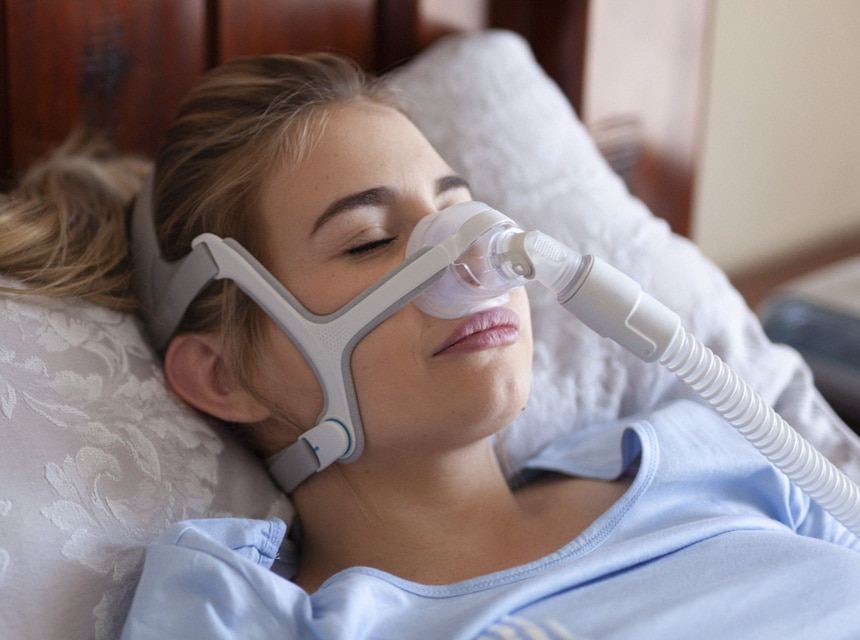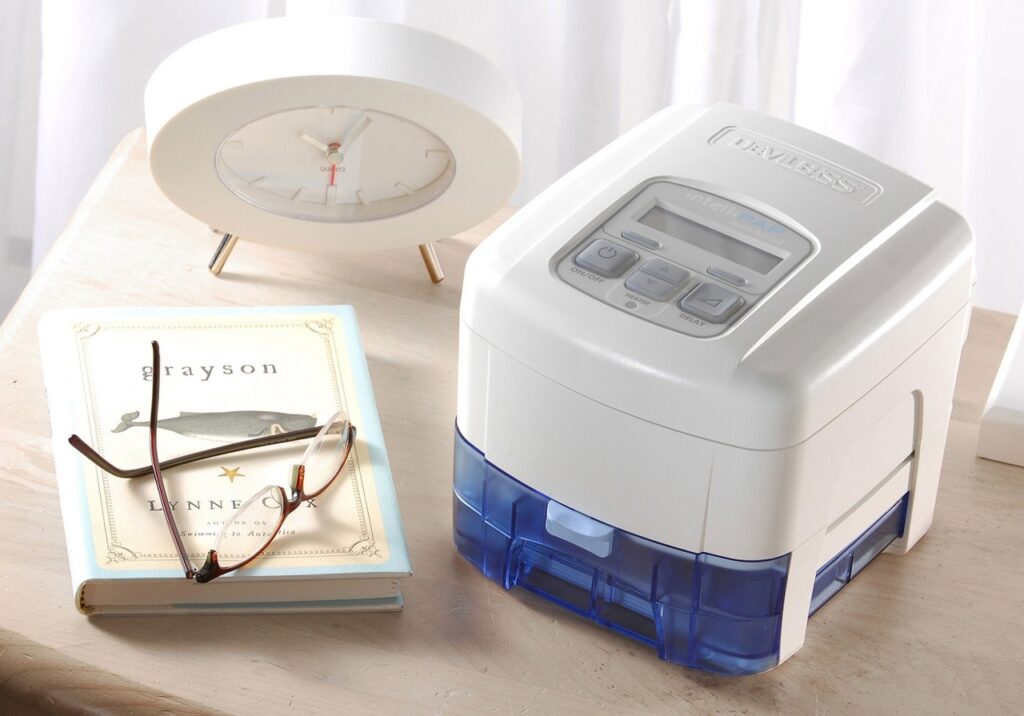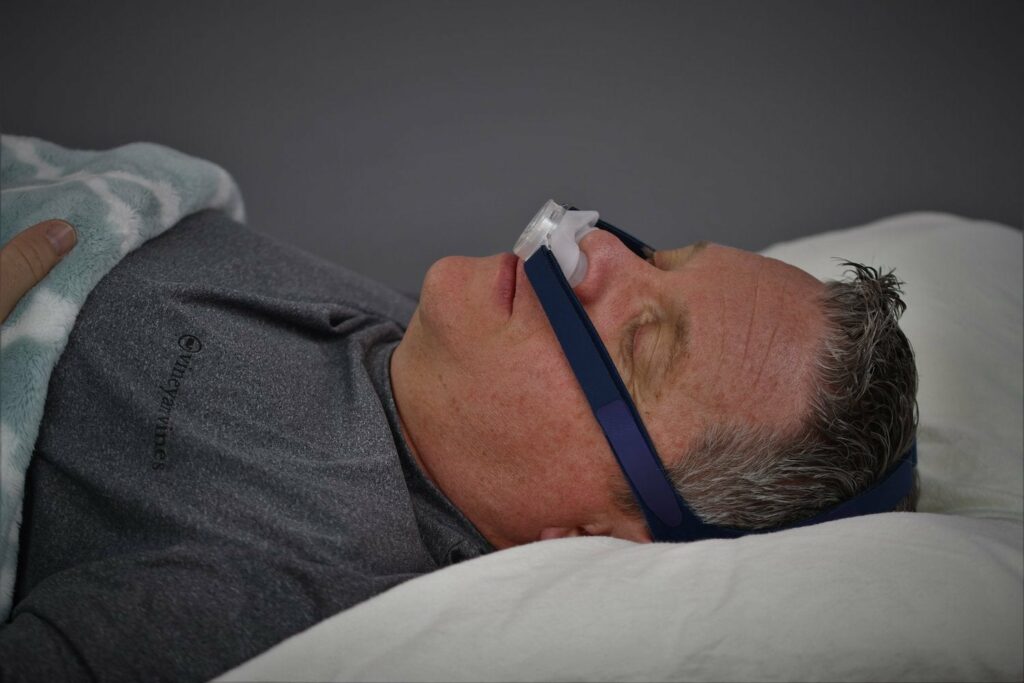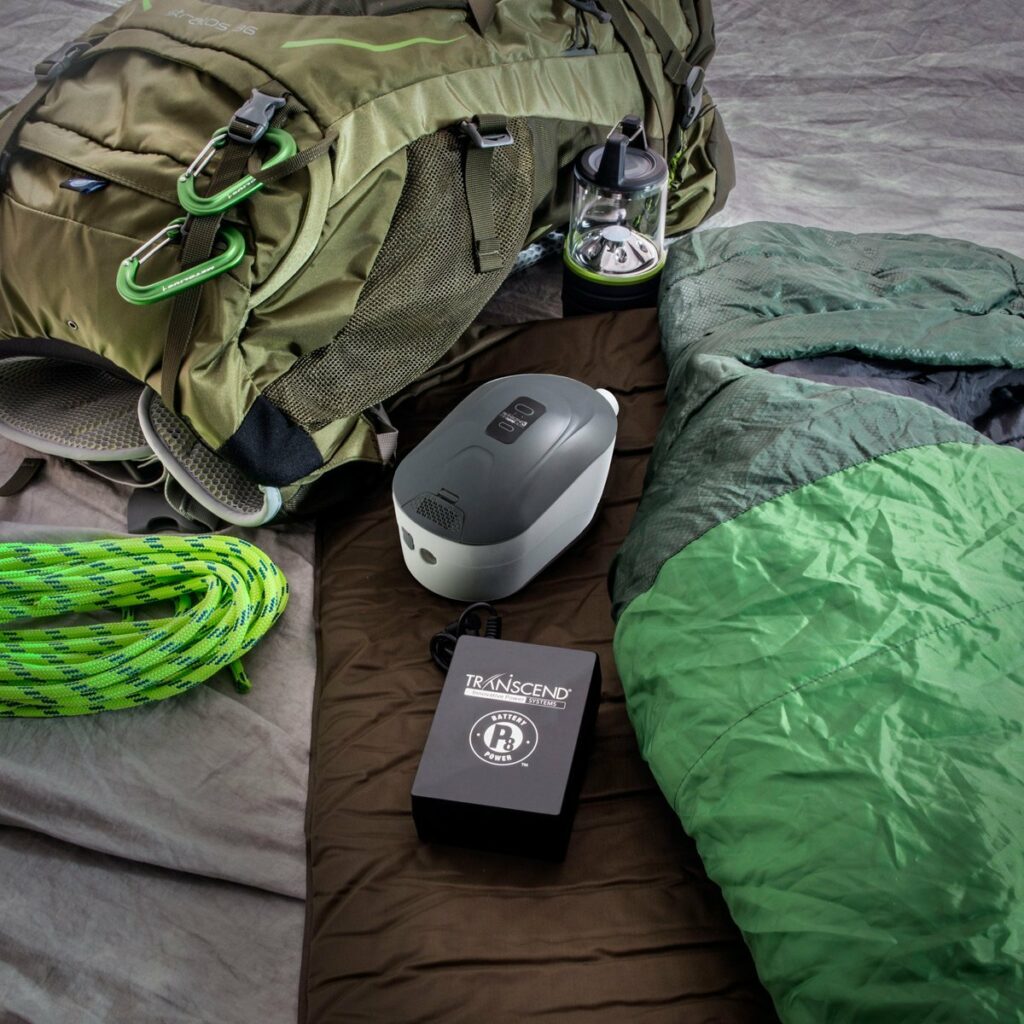

PAP is an acronym for Positive Airway Pressure, but you might have the difference between the CPAP vs. BiPAP machines when shopping for these machines. Both types utilize compressed air to open and support the airway of a person who may be suffering from sleep apnea Trusted Source Sleep Apnea: Types, Common Causes, Risk Factors, Effects on Health Sleep apnea is a serious condition that happens when someone’s breathing stops and starts during sleep. www.webmd.com , lung issues, heart problems, or one of many neurological disorders. With both, pressurized air is connected to a mask by a hose that assists lung function. If you are shopping for either type, it is likely you are one of the 3 to 7% Trusted Source The Epidemiology of Adult Obstructive Sleep Apnea Obstructive sleep apnea is being increasingly recognized as an important cause of medical morbidity and mortality. www.ncbi.nlm.nih.gov of the population that experiences sleep apnea. There are many pros and cons to think about when considering CPAP vs. BiPAP machines, so before you buy one or the other, consult with your health professional as well.
CPAP stands for Continuous Positive Airway Pressure. It is a portable machine about the size of a lunch box that assists with breathing using forced air with one pressure setting. The pressure is measured in cm H20, a measure of air pressured marked by centimeters of water pressure. CPAP units have an adjustable pressure system that delivers between 40 to 20 cm bH20 per breath, depending on the setting advised by your physician. Pressurized air is then sent through a hose to a mask worn over the mouth and nose, or just the nose to keep the airway open during an inhale and exhale. Some modern models due have sensors that allow a CPAP to have a slightly lower air pressure during the exhale, but in general, just one overall pressure setting governs the breathing process.
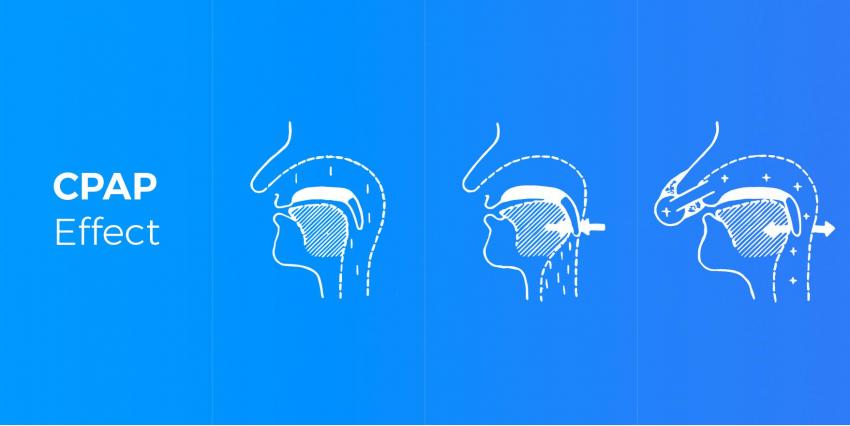
When you set the cm H20 on a CPAP machine dial to the desired IPAP (inhalation positive airway pressure) that exists when the person using the unit inhales, it keeps the same setting for the EPAP (exhalation positive airway pressure). This is different from a BIPAP machine that allows for lower pressure level settings when the user exhales.
CPAP is a type of portable ventilator primarily used for people with sleep apnea. It is a cheaper option at almost half the cost of a BPAP.
CPAP is a type of portable ventilator primarily used for people with sleep apnea. It is a cheaper option at almost half the cost of a BPAP.
Before purchasing a CPAP machine, it is a good idea to examine its pros and cons.
The pros:
The cons:
You can find out more about CPAP machine side effects at our informative CPAP page.
On the technical side of things, there is no way of adjusting the inhalation on a CPAP machine as you can with a BiPAP. If you want to adjust it, you have to turn the machine completely off, adjust it to the air pressure levels, and then turn it on again.
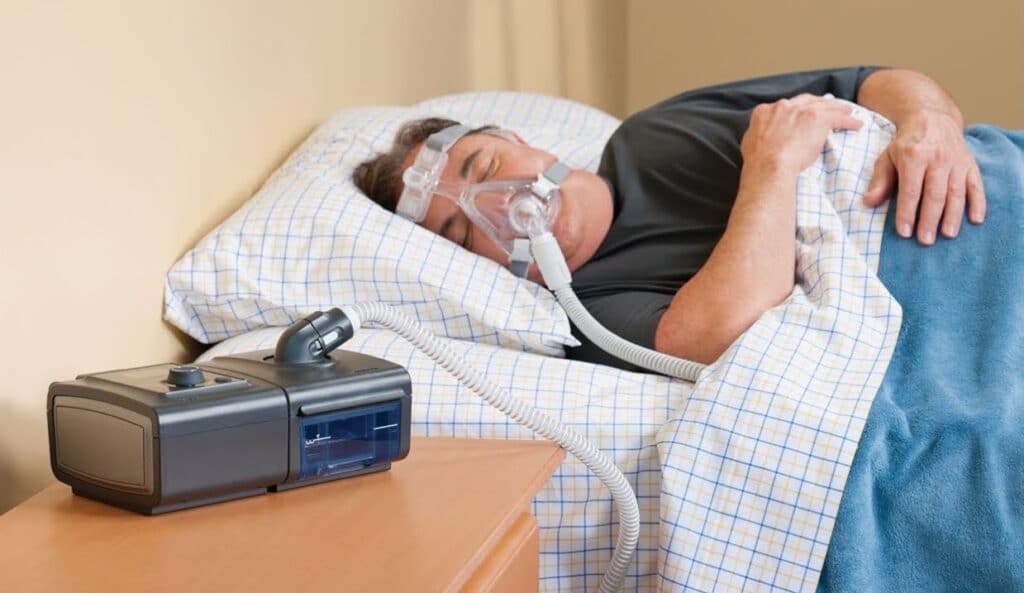
BPAP stands for Bilevel Positive Airway Pressure. This is a non-invasive ventilator-type machine that is meant for personal and home care use. It assists with breathing using forced air with a selection of two pressure settings. Depending on the model of the machine, the timing between inhales and exhales can be timed or be automatically set to suit the person’s breathing patterns. CPAP units have an adjustable pressure system that delivers between 20 to 40 cm H20. Pressurized air is then sent through a hose to the user’s masks to keep the airway open during the night. A doctor decides what level of pressure your lungs require to stay open while you are asleep. Some BiPAP machines also have a humidifier feature that helps prevent the airways from drying out.
The working principle behind a BPAO is the same as a CPAC. Pressurized air is pushed into the lungs through a hose to a mask to keep your lungs open while asleep and prevent pauses in breathing at night. You can set then cm H20 on a BPAP machine dial to the desired IPAP (inhalation positive airway pressure setting and then to a different setting for EPAP (exhalation positive airway pressure) that governs the exhale. This is much different than a CPAP machine that does not allow for different unique exhalation settings. The BPAP also has a backup respiratory system to make sure that people with central sleep apnea, a condition where you momentarily stop breathing altogether during sleep, are not ever deprived of lung support or oxygen.
BPAP is a non-invasive type of ventilation used for obstructive sleep apnea (OSA) as well people with other serious lung disorders such as COPD (chronic obstructive pulmonary disease), asthma, congestive heart failure (CHF), coronary artery disease (CAD), obesity hypoventilation syndrome, poor breathing after a medical procedure. It is used for people who have more trouble while exhaling rather than inhaling. It is also used in cases where the person can’t tolerate using the CPAP and requires a more customized setting.
Most BiPAP machines are quite portable and the size of a lunchbox or a small radio.
Here are the pros and cons of BIPAP machines which are capable of delivering two different pressures, one for inhalation (called inspiratory positive airway pressure, or IPAP) and another (lower) pressure for exhalation (called expiratory positive airway pressure, or EPAP.)
The pros:
The cons:
A BiPAP machine is about the size of a lunchbox. A face mask, nasal mask, or nasal plugs are attached to the machine by a tube.
The CPAP machine is mainly used to treat obstructive sleep apnea. This means that there is some kind of blockage preventing the person from breathing. The BPAP is more appropriate for someone with central sleep apnea to use, as this is a neurological condition where the connection between the brain and the muscles is disrupted, so the machine must take over the job of breathing entirely. Many conditions can cause this type of sleep apnea, such as stroke, heart issues, encephalitis, arthritis in the spine, and Parkinson’s disease. Certain kinds of medications, including opioids, morphine, and codeine, can also lead to irregular sleep apnea.
Yet another very important thing to consider is which machine is more easily tolerated by you if you have simple OSA (obstructed sleep apnea.) For more information about sleep apnea and its treatment, check our complete sleep apnea guide.
In the end, cost and what your insurance covers might be a deciding factor in what type of machine you are going to choose.
The aim of the treatment of both machines is to support breathing. Both machines send pressurized air at a steady, pre-set level through pressurized air, a hose, and a mask with a seal that fixes the face. However, a CPAC is really only useful for OSA (obstructive sleep apnea), but a BiPAP can treat many conditions, including CSA (central sleep apnea), COPD (congestive heart failure), and a host of cardiovascular and respiratory problems caused by such diseases as Parkinson’s, diabetes and Alzheimer’s disease
A CPAP machine aims to assist you with pumping the air in and out of your lungs at a steady set rate to help prevent snoring and the cessation of respiration during sleep for people who have OSA (Obstructive Sleep Apnea). A BiPAP machine aims to treat respiratory orders that have a more neurological origin by setting the air pressure going into the lungs at a slightly higher rate than the exhale.
BiPAP machines tend to be bigger and boast more features than a CPAP unit. An example of a BIPAP machine is the Breas VIVO 40 S that can be used in both a home and clinical setting. This is a unit with all of the features you could ever expect to find on a BIPAP machine. A state-of-the-art BIPAP machine like this has targeted volume pressure that adjusts automatically according to the person’s breathing pattern, thus eliminating the need for getting up in the middle of the night to adjust the air pressure, as would be the case with a CPAP unit. It also has several modes and an internal backup battery that keeps the breathing machine going for at least 3 hours. You can also use any mask with this unit, allowing you to find the most comfortable one.
A good example of a very compact, state-of-the-art modern CPAP unit is the Resmed AirSense 10 Autoset CPAP with HumidAir. Not every CPAP machine you shop for will have all of these features, but this one is a smart machine with a heated humidifier that can read breathing patterns. Sleep data is then stored on a cloud that you can then send to your physician. This machine is also very simple because using a newer Smart Start technology means that all you have to do is breathe into the mask, and the machine starts automatically. This kind of advanced unit slightly reduces the pressure when you exhale and a humidifier is included with it to reduce the “dry air” side effect that is so common with PAP machines.
The electricity powering your CPAP or BPAP machine is crucial as it powers the unit. You might be wondering if you have the right CPAP vs. BiPAP for a cord. Usually, the correct cord for the unit, whether it be a two-prong or three-prong unit, comes with the machine and is easily replaced by going to the manufacturer’s site. More expensive BPAP units are likely to have a three-prong cord. Always ground the unit by using a plug and not an extension cord to prevent fires and function interruptions.
A word to the wary before you buy any model of CPAP machine. There have recently been some recalls on certain brands, particularly the CPAP machines made by Philips, which had some severe issues. You can find out more about this CPAP machine recalls in our article.
So, should you choose the CPAP vs. BIPAP machine for sleep apnea? The type of sleep apnea that you have may determine which machine is going to work better for you. In fact, you may not have much of a choice in which one to choose if your doctor determines that you have anything else other than obstructive sleep apnea. CPAP is only useful for obstructive sleep apnea, whereas a BIPAP machine treats not only that but also a variety of other conditions, including central sleep apnea, COPD, and Obesity Hypoventilation disorder.
When it comes to BiPAP vs. CPAP for nursing in the home environment, a BiPAP machine is usually a better choice because it will have a lot of bells and whistles in terms of alerts that tell a caregiver immediately that the machine has stopped or that something is wrong. Furthermore, BiPAPs tend to have a backup battery that runs if the power goes off. If you have obstructive sleep apnea, then the “set and forget” type of CPAP machine technology will decide the auto CPAP vs. BiPAP argument for you.
| CPAP | BiPAP | |
| Pressure Level | 1 | 2 |
| Typical Pressure Range | 4 to 20 cm H2O | 4 to 25 cm H2O |
| Medical Applications | Obstructive sleep apnea (OSA), preterm infants | OSA patients who respond poorly to CPAP, central sleep apnea (CSA), COPD, congestive heart failure, Parkinson’s disease, ALS |
| Insurance coverage | May be covered | May be covered if CPAP therapy fails or is contraindicated |
| Average cost | $350-$1000 | $800-$2000 |
Comfort is crucial when you buy a CPAP or BIPAP mask as it can mean the difference between compliance and non-compliance. Generally, you are required by your doctor or an insurance company to use the unit five times a week. The more comfortable your mask is, the more likely you are to use it to comply.
PAP masks generally come in three types: Full face, nasal and nasal pillows. Full masks cover both your mouth and nose. Nasal masks only fit over the nose. Nasal pillow masks have two small plugs that fit directly into the nose. There is universal compatibility for tubing and masks to fit these machines, so you should be able to find the one that is right for you. If not, you can usually source these items at the manufacturer’s website.
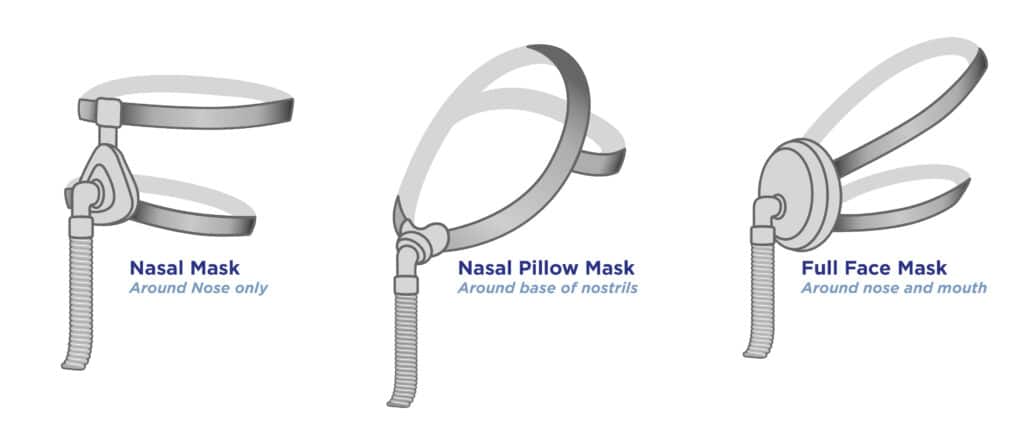
A few words about PAP masks before you decide to buy. The fuller on the mask’s face, the better the air pressure flowing into your lungs might be, as there is a tighter seal around both the nose and mouth. If you opt for a nasal mask, you may find that there is less air pressure making its way into your lungs due to the fact that you can open your mouth and there is no seal around your mouth. Hybrids of all three styles also exist, so you should be able to find one that works for you. However, also be aware that those with full facial coverage work best when it comes to a BiPAP mask vs. CPAP mask. Overall, it is a mask with a secure seal, comfort, and complete facial contact that is going to matter most, which is why it is good news that almost all models of CPAP or BIPAP fit the mask styles described above.
BIPAP is not necessarily better for treating sleep apnea. The difference between BiPAP vs. CPAP machine that is better for you is going to depend on your diagnosis. The BiPAP vs. CPAP indications are that the BiPAP works with more conditions than the latter. If your diagnosis is due to obstructive sleep apnea, you can use the more affordable CPAP machine. If it is caused by central sleep apnea, the breathing problem is generally neurological in origin, you will want a BiPAP machine.
Higher CPAP pressures are required with certain neurological conditions such as central sleep apnea, Parkinson’s disease, or a stroke as the brain may have forgotten to instruct the lungs on how to exhale. This is an example of a case where the higher CPAP pressures are required. It is always up to your doctor to consult with you to decide what pressure level is best for you.
Obesity Hypoventilation Syndrome, also known as Pickwickian Syndrome, is often treated with a CPAP device that offers a continuous supply of air to a sleeping individual. With this condition, difficulties with breathing are caused by extra fat on the body that then begins to secrete hormones that affect the way your body breathes. A symptom of having this condition is hypoventilation, which means the lungs have difficulty exhaling carbon dioxide, which in turn lowers the amount of oxygen reaching your blood and brain. You may choke, gasp or snore at night. Complications can be right chamber heart failure, pulmonary hypertension, erythrocytosis, a condition where the body makes too many red blood cells to compensate for the lack of oxygen.
When it comes to CPAP vs. BIPAP machines, the difference is mainly about forcing air through lungs that may collapse due to lung obstruction or lung airflow and cause temporary or even permanent cessation in breathing. CPAP is almost half the cost and also half the size of a BIPAP and only has one setting, which makes it useful mostly for obstructive sleep apnea. BIPAP machines can treat obstructive sleep apnea and COPD, Obesity Hypoventilation Syndrome, Parkinson’s, and other conditions. In the end, however, it is your compliance with the selected PAP machine that is going to matter the most, meaning whether or not it is tolerable enough for you to use it 5-7 nights a week. If you are not able to use it as prescribed, your insurance may not pay for it, and your physician may be reluctant to go forward with promoting you from a CPAP to a BIPAP machine when necessary.
